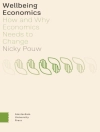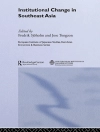A concise, introductory text,
Propensity Score Methods and Applications describes propensity score methods (PSM) and how they are used to balance the distributions of observed covariates between treatment conditions as a means to reduce selection bias. This new QASS title specifically focuses on the procedures of implementing PSM for research in social sciences, instead of merely demonstrating the effectiveness of the method.
Using succinct and approachable language to introduce the basic concepts of PSM, authors Haiyan Bai and M. H. Clark present basic concepts, assumptions, procedures, available software packages, and step-by-step examples for implementing PSM using real-world data, with exercises at the end of each chapter allowing readers to replicate examples on their own.
Table des matières
Series Editor’s Introduction
About the Authors
Acknowledgments
1. Basic Concepts of Propensity Score Methods
1.1 Causal Inference
1.2 Propensity Scores
1.3 Assumptions
1.4 Summary of the Chapter
2. Covariate Selection and Propensity Score Estimation
2.1 Covariate Selection
2.2 Propensity Score Estimation
2.3 Summary of the Chapter
2.4 An Example
3. Propensity Score Adjustment Methods
3.1 Propensity Score Matching
3.2 Other Propensity Score Adjustment Methods
3.3 Summary of the Chapter
3.4 An Example
4. Covariate Evaluation and Causal Effect Estimation
4.1 Evaluating the Balance of Covariate Distributions
4.2 Causal Effect Estimation
4.3 Sensitivity Analysis
4.4 Summary of the Chapter
4.5 An Example
5. Conclusion
5.1 Limitations of the Propensity Score Methods and How to Address Them
5.2 Summary of Propensity Score Procedures
5.3 Final Comments
References
Index
A propos de l’auteur
Dr. M. H. Clark is an Associate Lecturer, statistical consultant, and program evaluator at the University of Central Florida. She has a Ph.D. in Experimental Psychology with a specialization in research design and statistics from the University of Memphis. Her specific areas of expertise are in causal inference, selection bias in non-randomized experiments, and propensity score methods.












